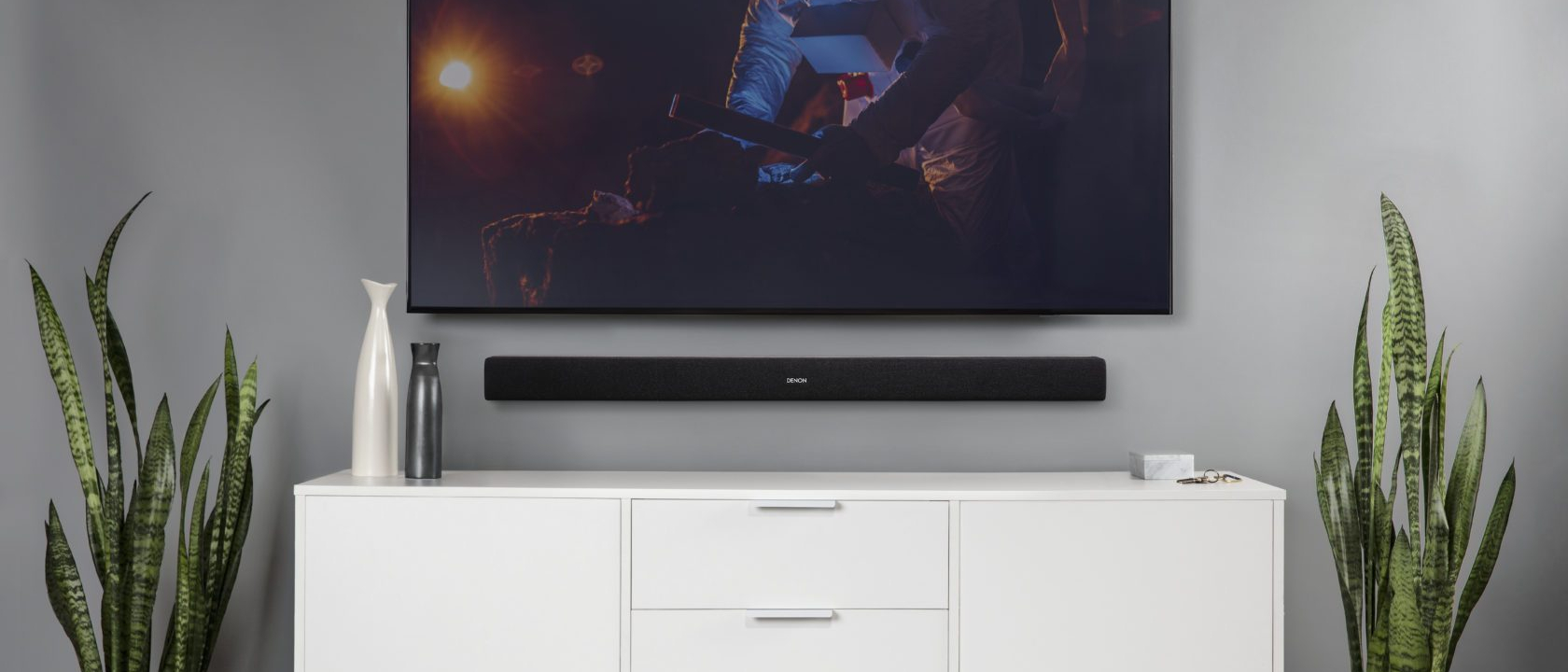TechRadar Verdict
If money's tight and your TV needs an audio boost, the Denon DHT-S216 Home Theater Soundbar is a cheap way to upgrade your audio without breaking the bank.
Pros
- +
Loud and clear
- +
Works with most subs
- +
Room for customization
Cons
- -
No Wi-Fi support
- -
No voice assistant built-in
- -
Bluetooth can be finicky
Why you can trust TechRadar
TVs have certainly gotten better visually, but it’s been at the expense of the onboard speakers. If you’re going to splurge on a nice big screen, upgrading the audio should be the next order of business. Luckily, you don’t have to break the bank to do it.
That’s how we felt after using the Denon DHT-S216, a $250 (£220, around AU$365) standalone soundbar that comes with DTS Virtual:X support and decent specs capable of punching above its audio weight.
You won’t get everything you might expect in a sound bar these days, but if it’s sound quality that you care about, your money will stretch pretty far here.
Design
The Denon DHT-S216 doesn’t look all that striking, but its neutral look allows it to fit right in with any home entertainment center. It measures about 35-inches wide, 2.35-inches high and 4.7-inches deep, making it a good companion for your 55-inch TV, but be careful that it doesn't block the IR sensor on your TV – it comes with plastic spacers, but no mounts, brackets or screws inside the box.
The back has a decent array of ports, including HDMI ARC, Toslink optical, Aux-In, plus another HDMI input for additional use cases. Rounding it out is a plug for a wired connection to a subwoofer.
That last part should be of particular interest because it applies to third-party subs, too. You don’t have to use a Denon one if you don’t want to, and while a wired sub may limit your options on layout and deployment, it’s a nice perk to have at this price point.
All of this comes with caveats that you have to accept right off the bat. First, surround sound won’t be an option because there’s no way to make it work. Since this isn’t part of Denon’s HEOS lineup, the DHT-S216 doesn’t support it, wired or wireless. That’s a big reason why the third-party sub openness is all the more important.
Inside, the sound bar has two downward facing 3-inch subwoofers, two mid-range dual drivers and two 1-inch tweeters. It goes louder than you might expect, and DTS Virtual:X 3D surround sound aims to deliver the kind of overhead sound you’d get from having upward-firing speakers. It will do it no matter the audio source, but it’s markedly better when the content actually supports it. That’s a bit of a problem when big names, like Netflix, Amazon Prime Video, Vudu and iTunes, don’t natively support it however you will get an effect, regardless.
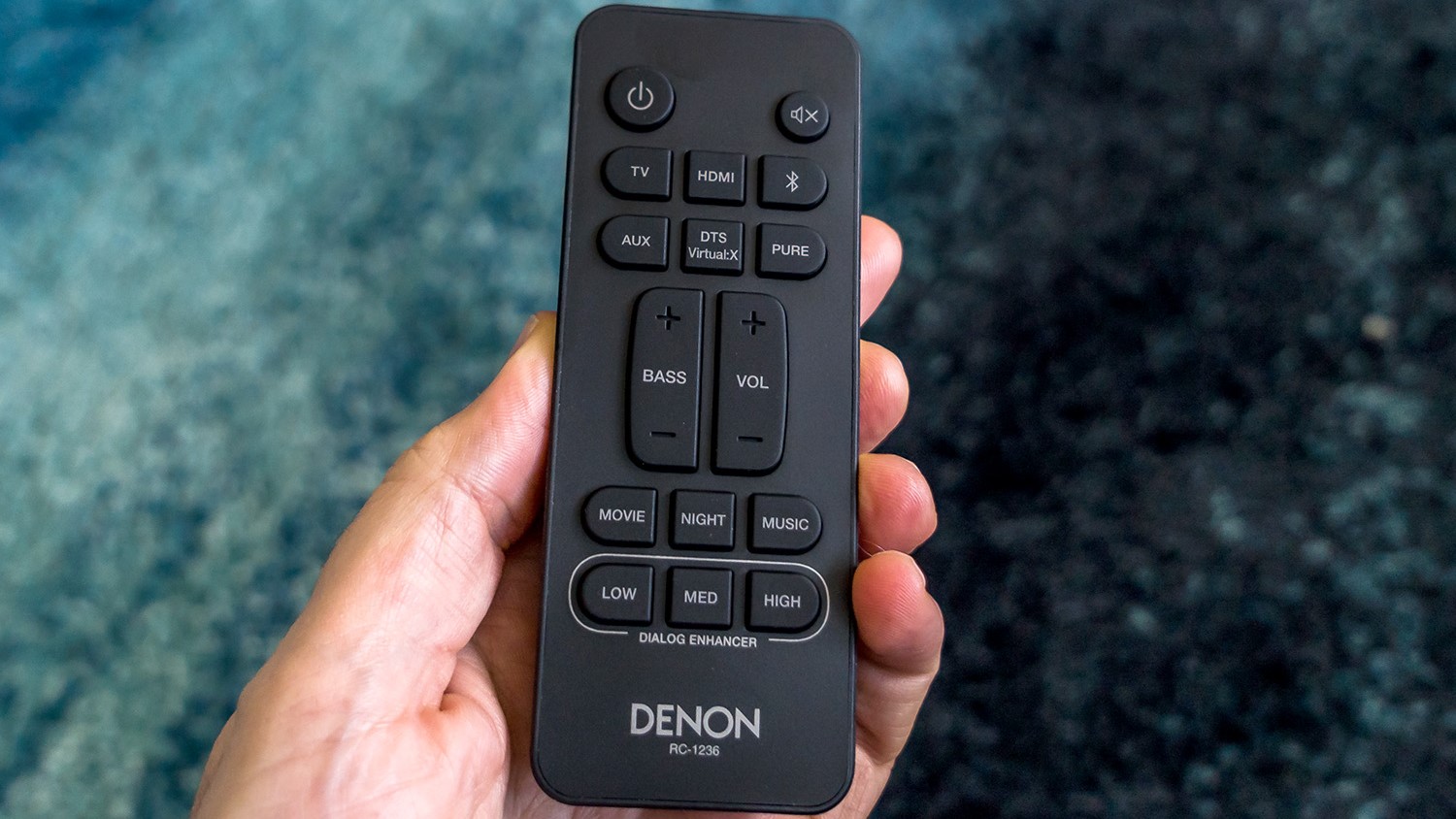
The sound bar comes with its own remote, and we found we had to reach for it more often than we expected to make adjustments. It’s an old school remote, with no backlit buttons and straightforward layout, but it does the job.
There are buttons for all the main inputs, plus dedicated ones for DTS Virtual:X and Pure, a mode we’ll get to later. Rockers for volume and bass, plus modes for Movie, Night and Music, and three dialogue enhancer settings to choose from. The power and mute buttons are at the top.
Learning the remote also means learning the LED array on the sound bar itself. The top has physical buttons for power, input, Bluetooth and volume. The LEDs on the front correspond with the input or the audio source. So, for example, orange lights will indicate a DTS audio source, whereas green will be for Dolby, and blue for Bluetooth. White LEDs will line up with the input you’re using, meaning one would be for HDMI output, two for HDMI ARC, three for optical and four for Aux. Five will flash when you mute sound.
Again, because the remote has no backlit buttons, the sound bar’s LEDs are your only visual sign of what mode or feature is actually working at any given time.
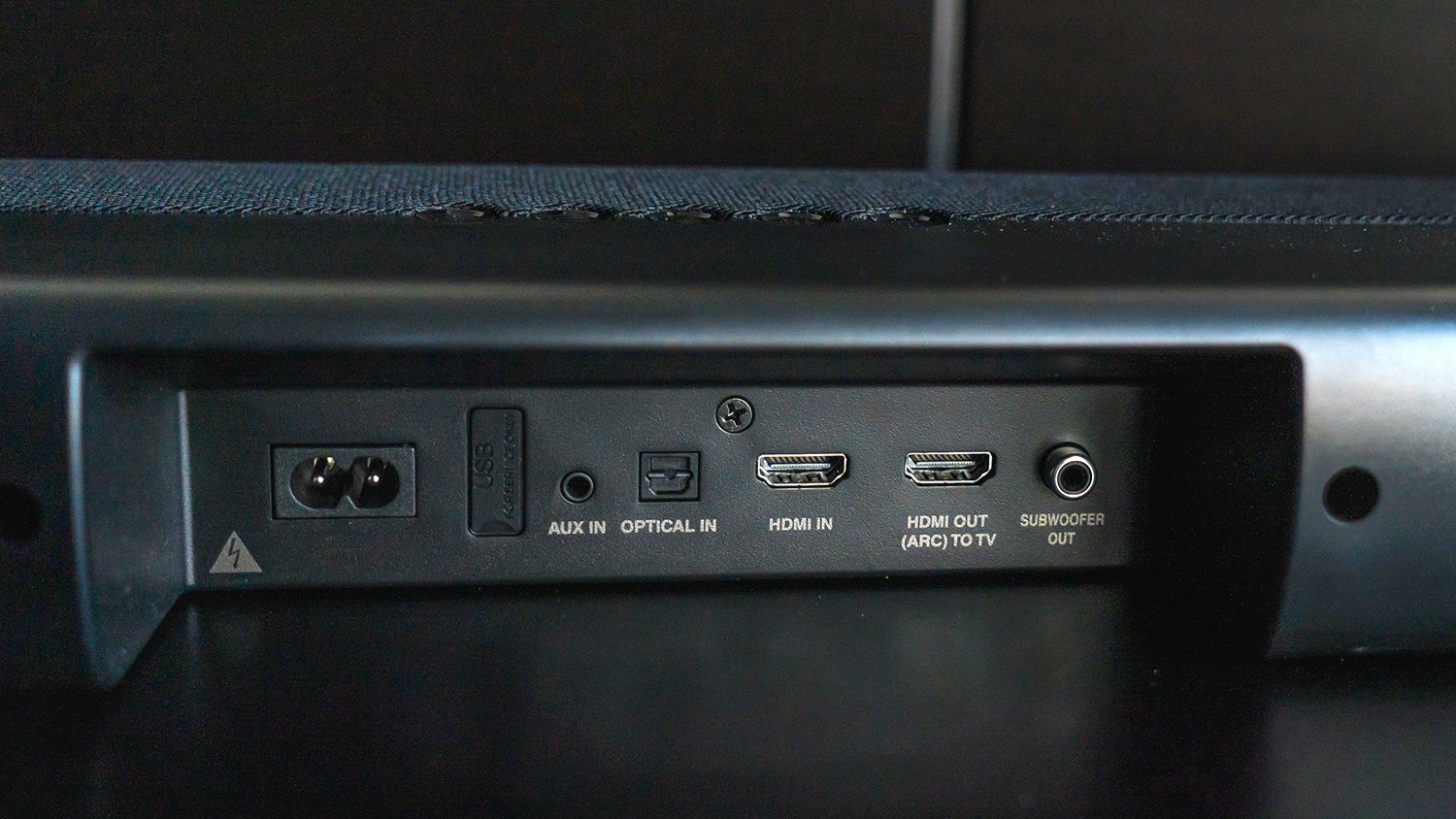
Setup
The easiest connection is probably HDMI ARC because it routes all audio for devices connected to the TV through it. This way, if you have a game console, cable box, streaming box or Blu-ray player, you won’t have to do much configuring. As long as the TV is set to HDMI ARC in its own settings, there should be no issue. We should note, however, that DTS-HD Master Audio formats won’t work under this setup
Audiophiles will probably already know that, and that’s where the HDMI input comes in. In that setup, you would plug in one of the devices into that port and then run another HDMI cable from the sound bar’s ARC output to the TV. This configuration allows for DTS-HD Master Audio, as well as Dolby TrueHD, to come through.
The issue we had with trying that was only having the one input: without an HDMI splitter to bring in the other devices, it becomes an impractical way to set up the DHT-S216 unless lossless audio is that important to you.
Two other key features are missing here – there's no Wi-Fi chip inside the soundbar, so no wireless connectivity to the home network. That also means no built-in voice assistant access for Google Assistant or Amazon Alexa.
There are workarounds for that involving a TV or compatible box. We tested this sound bar on a 55-inch TCL 6 Series with built-in Roku TV. While that platform also doesn’t have voice assistant access, other TVs do. Any TV or box with Android TV gives you access to Google Assistant, as would any Fire TV product from Amazon. You would need the TV on to use them, of course, but it does mean the bar can play its part.
Same with Spotify. When a TV is connected, it’s an available source through Spotify Connect. We played music that way all the time, and found it a better method than Bluetooth. The DHT-S216 has Bluetooth, which is a convenient alternative, though we had some issues with playback dropouts.
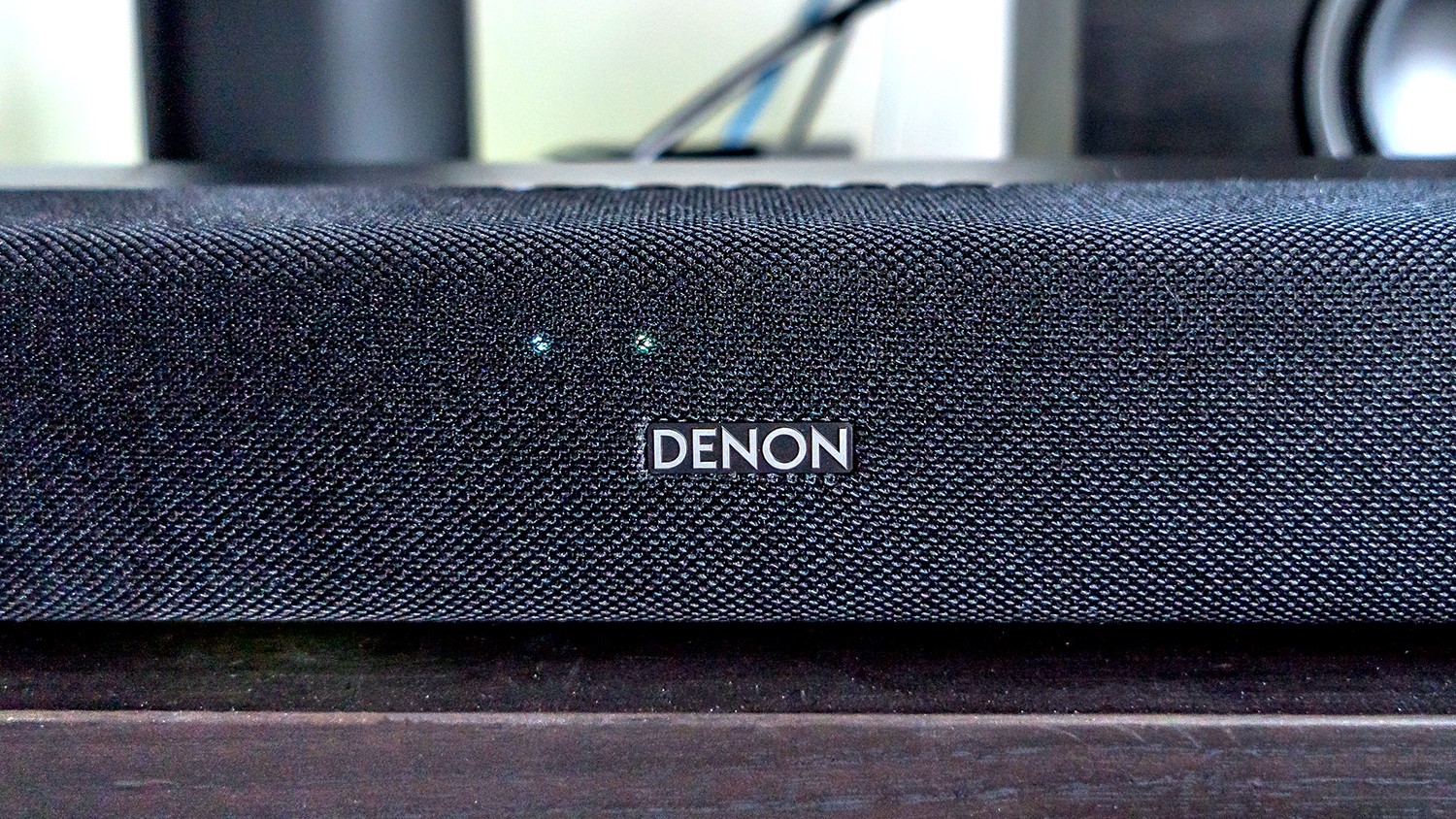
Performance
For its limitations and price, the DHT-S216 was a pleasant surprise. We were impressed with how full sound came out despite not having a separate subwoofer. While it naturally couldn’t fully emulate a pair of rear surrounds, it held its own quite well in delivering something that felt like more than just a 2.1 “sweet spot” listening and viewing experience.
However, it takes some time to figure out what the best configuration is for a given content scenario. For example, Pure is the mode free of all processing and software-based magic that works to pump audio out in an immersive way. It really depends on what you’re watching with it. We found it could be pretty good for dialogue-heavy shows or even a concert video, but we leaned toward DTS Virtual:X or Movie mode for movies and TV shows.
Using the virtual 3D surround heightened the highs and lows, but not always the mids, which affected dialogue. That’s when we put the dialogue enhancer to medium or high to make up for it.
We tested all this out on a wide array of films and shows, with an emphasis on specific scenes. The tension in the border clash in Sicario came through nicely, as did the chaos of the underpass chase in The Dark Knight, where a multitude of sounds cascaded throughout. We also liked the combination of music, dialogue and action that went so well together in shows like Miami Vice, The Sopranos and The Wire.
Enhancing the dialogue often only raised the mids, rather than specifically boosting voice clarity. We noticed this in Virtual:X’s tendency to add a slight sibilance to voices, particularly in movies or shows that were heavy on dialogue. It was more noticeable with higher pitches, but you could also catch it with deeper ones. Granted, we weren’t expecting miracles knowing this sound bar has no actual center channel, but it could’ve also been far worse, considering the price.
Music was a more streamlined affair for us. We tended to eschew 3D surround unless we were streaming live tracks, preferring to go with Pure or Music and raising or lowering the bass as desired. No one genre really stood out, though that’s probably a good thing. We liked the soundstage in everything we listened to, including how loud we could pump things up without venturing into distorted reverb territory.
Unfortunately we didn’t have a separate subwoofer to plug in to this thing – but, if we had, we’re pretty sure the sound bar would’ve sounded even meatier than it already does. You may not need it if you live in a smaller space, but larger rooms would definitely gain an advantage with one.
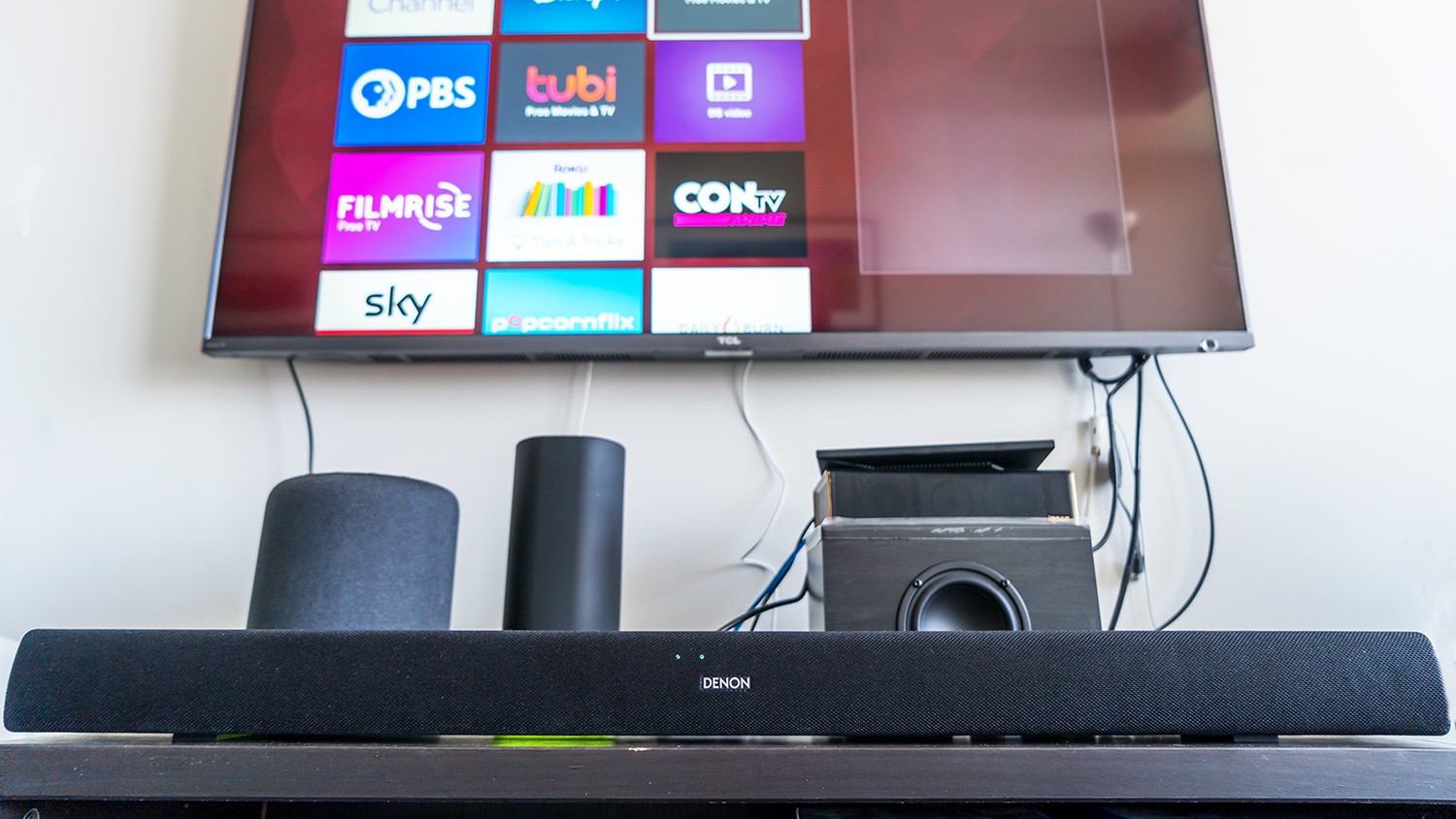
Final verdict
Denon did right by the DHT-S216. It prioritized putting together impressive audio performance over a checklist of features. Sure, it'd be great if it had built-in Wi-Fi and voice assistants, but its sound quality and price point more than make up for any shortcomings on that front. If money is an object, and your TV needs an audio boost, this is a cheaper way to do it without cheaping out.
- Ready to upgrade your audio? Don't miss our list of the best soundbars
Ted Kritsonis is the Freelance Tech Journalist. He is a Tech journalist contributing to a dozen publications: Globe and Mail, MobileSyrup, Futurithmic, Android Central, TechRadar, and WhatsYourTech.ca, among others.
